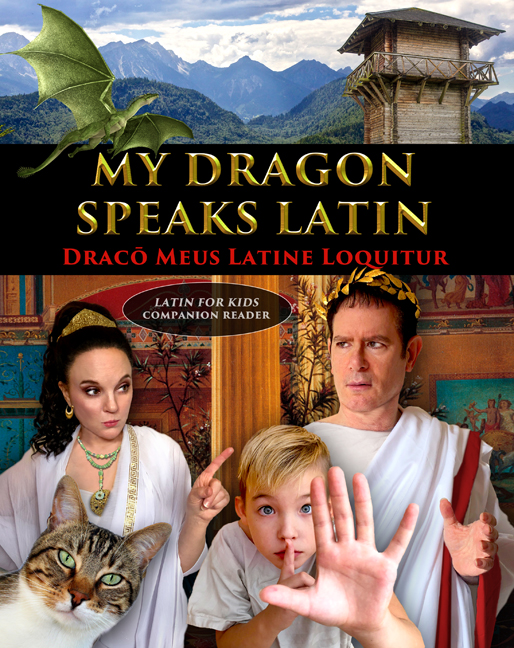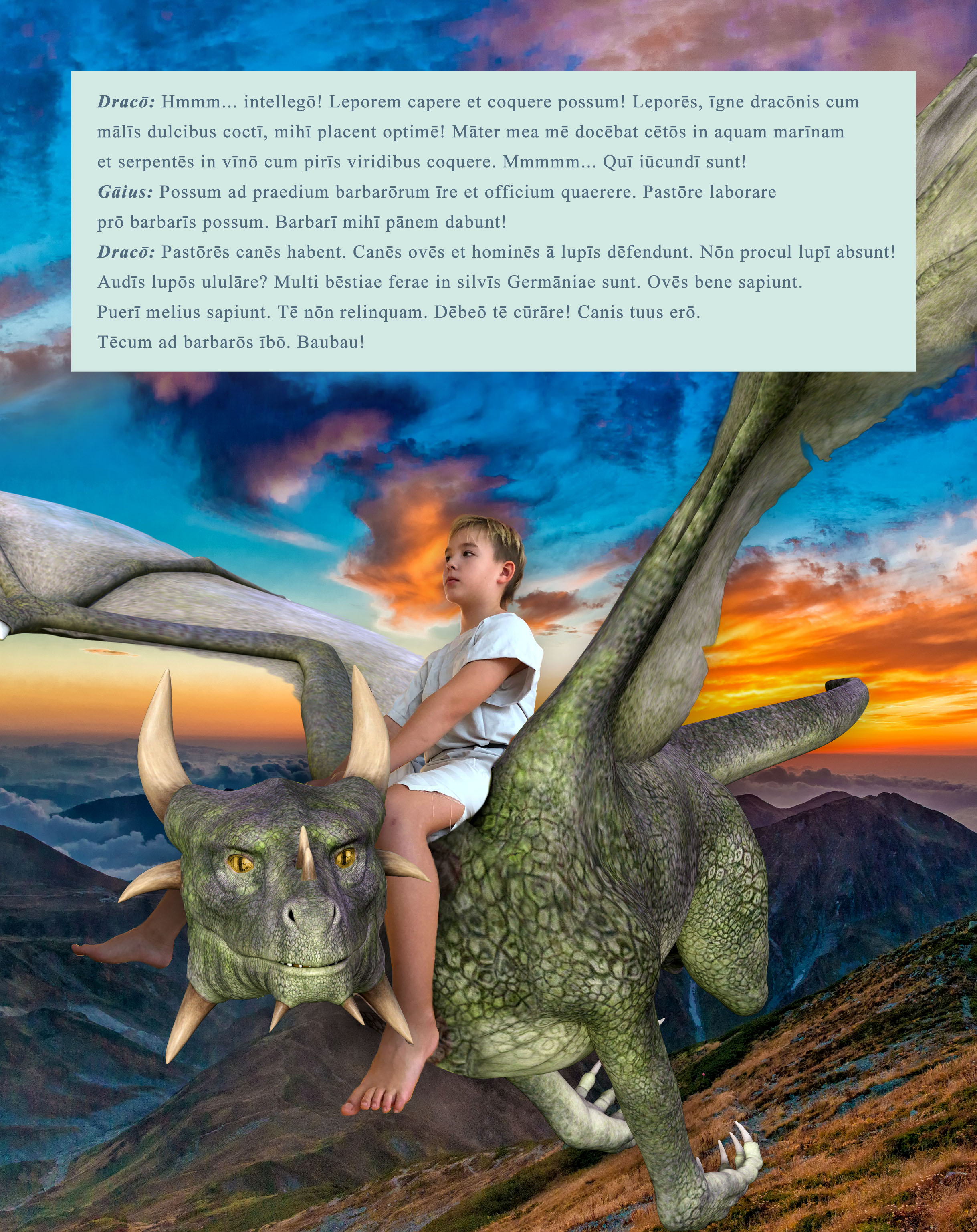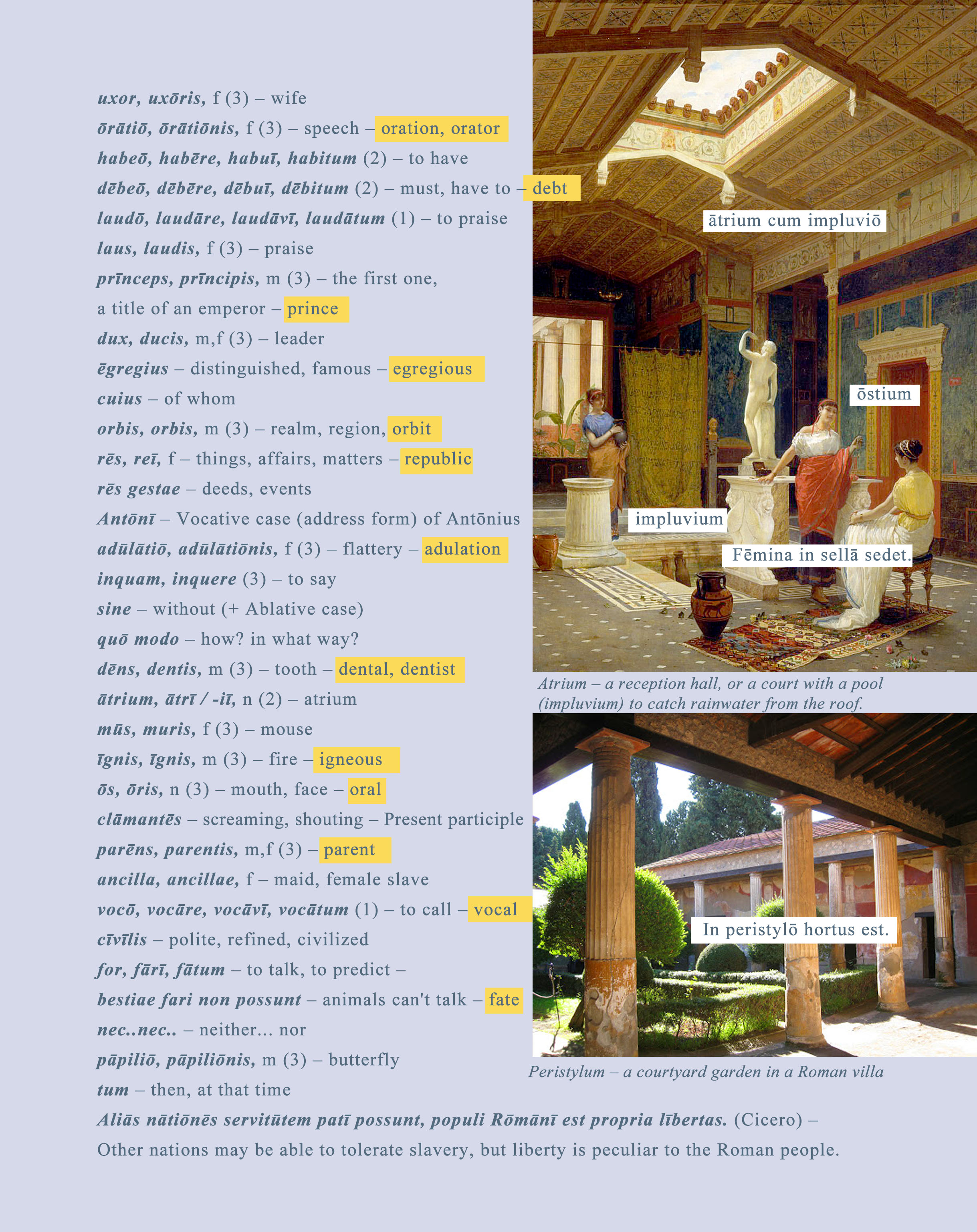





Each chapter is a page and a half of Latin text with an extensive glossary. Just like in "Latin for Kids," I list modern English words related to our Latin vocabulary. The grammar is limited to the scope covered in "Latin for Kids" (see "Latin for Kids" description). The idea is to enable readers to grow their vocabulary and acquire fluency in recognizing familiar forms of nouns and verbs without the pressure of learning new grammatical features. For example, narration is done mostly in the present tense unless characters talk about past events. Most of the book is dialog.
Most chapters have a 'pictorial glossary' - illustrations with labels and captions in Latin - and sections providing historical and cultural background to the story. These sections are richly illustrated and include such diverse subjects as gladiator schools in Rome, colors of Roman clothing, 'unswept room' Roman mosaics, the fanciest Roman dishes, Roman jewelry, Roman wedding ceremonies, Roman forts, the Hercynian Forest, Caesar's 'Gallic Wars' (with excerpts about Germanic tribes and - of course! - unicorns), Roman crowns, the crossing of the Rubicon, Hadrian's Wall, Germania Magna, Battle of the Teutoburg Forest, Pax Romana, principate vs dominate, the sacking of Rome by Alaric, 'feles' vs 'cattus,' cardinal directions in Latin, Roman time units, and other subjects.